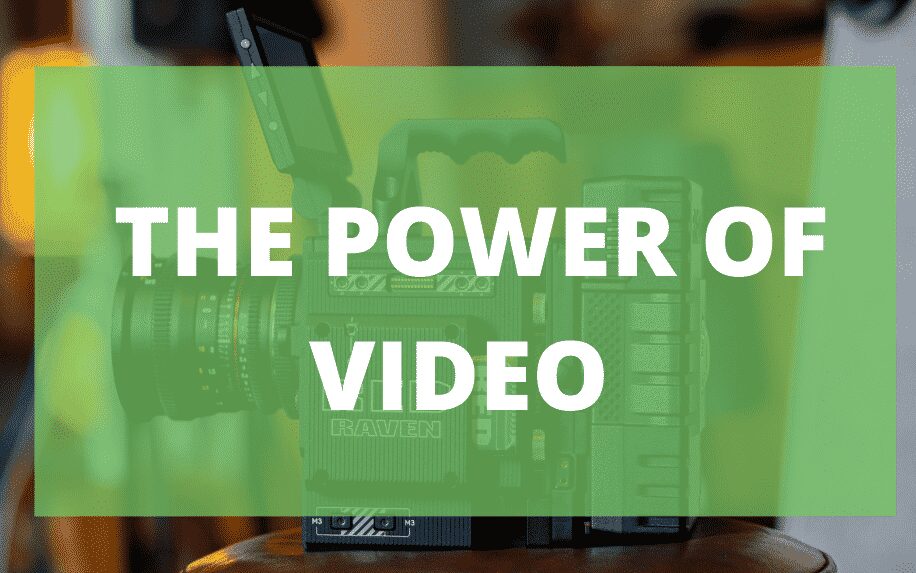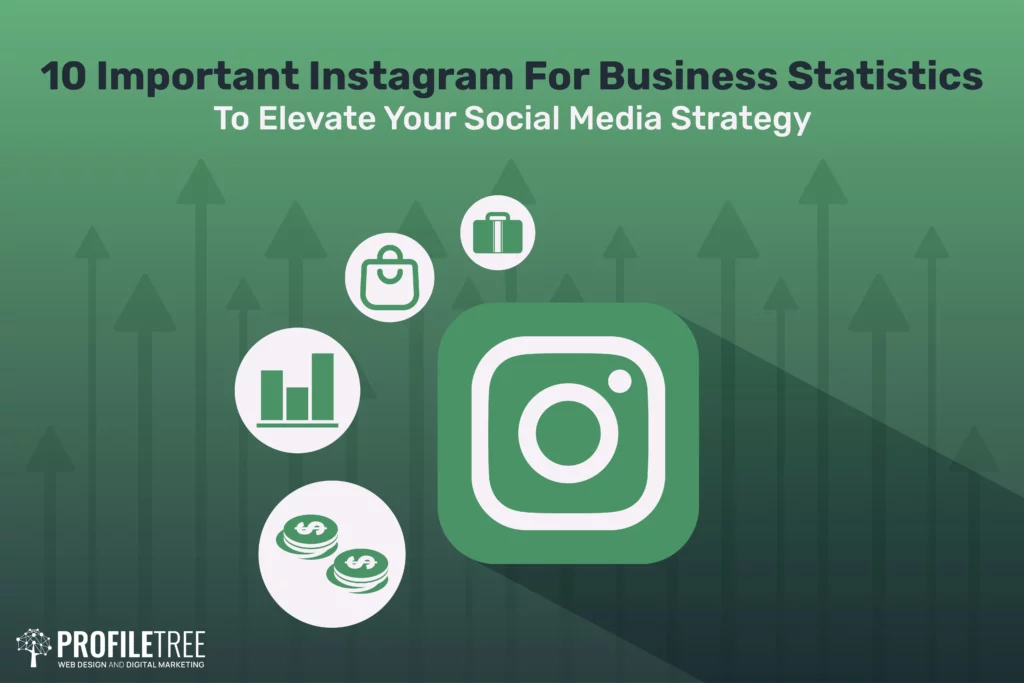What is video production? The modern audience moves fast and often does not have time to slow down for information. Video marketing uses this and a huge visual advantage to benefit your business.
Video content represents the fastest-growing online media category today. As technology expands access and reduces production barriers, over 500 million hours of video is already consumed daily across the internet. And with 80% of customers relying on online video when researching purchases, video content now serves a pivotal role in modern marketing strategies.
Yet despite this undisputed importance, many brands struggle to leverage video effectively across platforms ranging from social media to advertising to owned site content. Budgets get wasted on flashy videos that fail to resonate with audiences and drive ROI. This guide will unpack everything from production best practices to performance optimization in order to extract maximum marketing value from video content investments.
Readers will learn:
- Step-by-step guidance for developing on-brand videos tailored to corporate goals
- Best practices for optimizing video content across social, advertising, episodic and other use formats
- Insider techniques for cost efficient video production
- Metrics and analysis for calculating content ROI
Read on to find out more!…

IN A RUSH?! Click for our <2 minute snapshot
Table of Contents
What Is Video Production?
Video production is the process of creating video content for various purposes, including communication, education, entertainment, and marketing. It encompasses a wide range of activities, from planning and scripting to shooting, editing, and distributing the final video product.
Phases of Video Production
Video production typically involves several distinct phases, each with its own set of tasks and responsibilities:
1. Planning and Pre-Production:
This initial phase involves developing the concept, defining the target audience, and creating a detailed plan for the video. It includes activities such as:
- Concept Development: Establishing the video’s purpose, key message, and desired outcome.
- Scriptwriting: Drafting a script that outlines the video’s dialogue, narration, and visual elements.
- Storyboarding: Creating a visual representation of the video’s flow, including shots, transitions, and camera angles.
- Budgeting: Determining the financial resources required for production, including equipment, crew, and location costs.
2. Production:
The production phase involves capturing the video footage according to the script and storyboard. It requires a skilled production team, including:
- Director: Oversees the entire production process, ensuring the video aligns with the vision and goals.
- Producer: Manages the logistics, budget, and schedule of the production.
- Videographer: Operates the camera and captures the video footage.
- Sound Engineer: Records and manages audio levels, ensuring clear and consistent sound quality.
3. Post-Production:
Post-production involves transforming the raw footage into a polished and engaging video. It includes activities such as:
- Editing: Assembling the video clips, adding transitions, and incorporating visual effects.
- Color Correction: Enhancing the color balance and overall visual aesthetic of the video.
- Audio Editing: Mixing and enhancing audio tracks, adding music and sound effects.
- Graphics and Animation: Creating infographics, motion graphics, and other visual elements to enhance the video’s storytelling.
4. Distribution:
The final phase involves distributing the completed video to the target audience. This can be done through various channels, such as:
- Online Video Platforms: Uploading the video to platforms like YouTube, Vimeo, or social media.
- Website Integration: Embedding the video directly into the website or blog posts.
- Email Marketing: Including the video in email newsletters or campaigns.
- Social Media Sharing: Sharing the video on social media platforms to reach a wider audience.
Video production is a dynamic and creative process that requires a combination of technical skills, artistic flair, and storytelling expertise. By effectively combining these elements, video producers can create compelling and impactful videos that engage audiences, communicate messages, and achieve desired goals.
Video Content Types & Examples
Social Media Videos
- Highly-produced short videos promoting products, events or campaigns on platforms like Facebook, Instagram, TikTok
- Example: An apparel brand using micro-influencers in styled videos on Instagram Reels
Commercial Video Ads
- Paid ads driving conversions through platforms like YouTube, Hulu and Amazon DSPs
- Example: A D2C brand running bumper ads on YouTube to increase purchases
Explainer & Tutorial Videos
- Educational step-by-step videos to showcase product usage or professional services education
- Example: SaaS company tutorials for users learning the software platform

Behind-The-Scenes Videos
- Provide inside looks into company operations like culture, employees, or design process
- Example: An accessories brand giving glimpses of new product prototypes
Industry Statistics
- 80% of consumers say video helps them make purchase decisions (Source)
- 90% of customers say videos are useful in research before purchases (Source)
- 64% of consumers make purchases after watching branded social videos (Source)
What are the Three Main Stages of Video Production?
On the surface, video production has many elements to it. But, there are only three key stages of the art: pre-production, production, and post-production. They all sound the same, yet they all have different processes to make the perfect video.
First, there is the pre-production. This is where the planning takes place. You come up with the idea and plan out the script. If you have a team, there are many ideas that will get thrown around before landing on the right one. After the idea is formed, you and your team have to do your research. The amount of homework done on a subject will make or break your whole project.
However, you must be careful of the source of your research. The internet has been fact and fiction so blurred together that it is hard to tell which is which. Cross-check everything before you fully follow that source. Once the concept is formed, it is time to write out the script.
Writing and story boarding will help build everything piece by piece. Through this step, you will point out the plot holes and some details that do not feel needed. You have the script polished and ready to go and now it is time to get people to work with.
Casting and hiring the crew take time with looking a resumes and backgrounds. You also need to find the location where you want to shoot your video. Some places might be off-limits or require special permission to shoot there. After you pick out the location, you have to secure it to the best that you can so.
Scheduling for filming requires looking into everyone’s schedules and checking elements such as weather and when rooms are going to be in use.
Communication plays a huge role in scheduling. Get all of the numbers of the cast and staff. In order to make everything work, try to be in contact with everyone. Texting, e-mail, video chat, or simple phone calls are the best ways to keep in contact with each other.
If it helps, set times that will work best for talking to each other. Having an open line of communication can help with working through problems that could pop up in production.
Another thing that is needed in the pre-production stage is the equipment. It helps to check and make sure that everything is working before you can start filming. You might have to shop around for the right cameras and microphones, but it will be worth it. After the wardrobe, set pieces, and props are ready, it is time to move into the production stage.

Production
Production is where all of the fun times place. You get to play the role of director. You stand behind the camera or next to the cameraman and watch your script come to life. This part might be fun, but there is so much work involved. Keep in mind that every shoot will not be perfect. There will be possible technical difficulties with the cameras and microphones.
The actors will flub their lines. Plus, there are things that can get into the background. As a result, some shots have to be re-taken or dropped altogether. In some cases, you might have to scrap the whole thing and start over from the beginning just to get your vision as close to how you are possible to make it happen. But, it will all be worth it once the final product is produced.
Be sure to give your cast and staff a break for food, water, and using the bathroom. Everyone has to be at their best during the shoot. After you have video filmed, you have to move to the final stage of post-production.
Post-production is the cleaning up and editing of a video. In the past, the crew had to cut and paste the film together to produce a movie. Modern times have made the post-production process much easier. You have to sit in front of the computer and work on your video in a video editing program. Putting the video together is like putting together a jigsaw puzzle.
You put the shoots together in a sequence that follows the storyboard. You also add in the graphics you want. It is important to save everything and have back-ups. Technology can be unpredictable. On a bad day, a computer or laptop can malfunction and all of your hard work can end up going down the drain.
Save every step of your work in post-production and make back-up copies. The cloud and Google docs are a good source to save anything and everything. Once the video and audio is cleaned up, you are ready to show off your video to the world.
What are the Benefits of Video Marketing?
Just like social media itself, video marketing trends are a force to be reckoned with. When video marketing is done correctly, you could increase the traffic to your business. Video marketing relies on the good old tip that runs deep into all forms of art: show and not tell. If you are selling your business or product, you can demonstrate to the viewer how it works.
Another benefit of video marketing is that videos can be shared easier. Streaming services like YouTube have made it easier for videos to be seen on the internet around the world. If a video is popular, the more times that it will be shared on social media platforms like Facebook, Twitter, etc. One more benefit that plays into video marketing is that it can lead to more business opportunities.
You could end up impressing potential business partners with your video marketing. They may want to talk to you about working with you. YouTube is also a place for their stars to make money. Different products can sponsor their channels to help keep them running.
YouTubers will promote a product in their video. This could lead to more customers coming to you. Through this way, you enter a cycle of giving money to the YouTuber and they will draw more clients to you.
Video Creation Best Practices
Equipment Tips:
- Invest in quality camera equipment for best resolution like DSLR or mirrorless cameras
- Ensure stable tripods and fluid camera movement with gimbals/grips/sliders
- Capture quality audio by minimizing background noise and using external mics
Platform Optimization:
- Tailor video runtimes and formats to platforms from square videos for Instagram to landscape YouTube
- Include captions and subtitles for higher engagement and accessibility
- Create episodic content to increase viewership and follows
Calls to Action:
- Include both visual and verbal CTA prompts for desired next steps
- Overlay clickable links, site URLs, or promotional codes
- Maintain CTA consistency across episodic videos in campaign
Let viewers know exactly what you want them to do next like visiting your website, redeeming a coupon code or engaging further with your brand.
What Does it Mean to be a Video Producer?
Anyone can shoot a video. It takes much more to produce top-quality video. A video producer takes many things to get to where they are in their job. The first is vision. There is a Japanese proverb that goes, “Vision without action is a daydream. Action without vision is a nightmare.” It helps to have some idea of what you want to shoot. Going in and shooting blindly makes you look unfocused and immature with your work. Some people cannot sit down and plan everything out. For that case, write down your ideas and work from there. Another element to being a video producer is creativity.
There are countless number of videos that go out in the world every day. After a while, they will all start to blend together. The last thing you want is to have your video to get lost in a sea of mundane. Try to stand out with your video production. You do not have to have a huge budget to pull this off. Take an old cliche and breathe life into it. Select stars that have life and personality in time.
Patience
Shock value is also a good way to stand out, but don’t overdo it. It can look like you are desperate for attention. A little bit of creativity will carry you further than you can picture. Another trait for being a video producer takes patience. Not everything will go your way. Different things can happen during production. Weather patterns change without warning. Accidents happens and people get sick.
You have to patient in the face of things falling apart. If you have to, step away from the project for a little bit and come back when you have a clear head. If that does not work, it does not hurt to start over from scratch. One more trait that is needed to be a video producer is commitment. Once you step into a project, you have to see it through until it is finished.
Of course, things will not always go right. It can be tempting to throw it all away. But if you do that, you will not have anything to show for all of your hard work. Remind yourself of the reward at the end of the road.
Once you get to the end, you will look back and smile and the fruits of your labor. Also, you cannot by lazy with your work. If your effects and shooting are halfway done, people will be quick to notice. Big budgets should show how much was put into the video production.
Sometimes, money can be tight, but that should be no excuse in giving it your all. You just have to work extra hard to make up where your budget is too tight. Another thing to keep in mind for being committed is knowing that every video that you production will not be your best. You cannot please everyone.
There will be those who do not like any of the video you make. Some video marketing trends will be duds. This should not stop you. If you end up making a video that is not so successful, look back at what went wrong, learn from the mistakes, and make the next one better than the last video. The whole process of video production is a learning process.
How a brand effectively leveraged video content to drive business growth:
Case Study: Food Brand Drives 191% Revenue Lift with Targeted Video Campaign
The Challenge: Meal kit delivery service FoodCo wanted to promote their new premade heat-and-eat meals line to acquire new customers. However, with a limited video marketing budget, they needed to maximize reach and conversion lift.
The Video Strategy:
Working with an agency, FoodCo developed a series of social media videos showcasing their easy meals being prepared and enjoyed in appetizing settings. They focused ad spending on Facebook and Instagram feeds with the video content plus single image carousels. The videos conveyed the quality and convenience messaging around the new product line.
The video campaign targeted relevant demographics who have shown interest in cooking or meal subscription brands. The ads featured clear calls to action to visit FoodCo’s site along with limited time discount promo codes.
The Results:
Over the 2 month campaign period, FoodCo saw exceptional growth driven by the video content:
- 186% increase in website sessions from paid social referrals year-over-year
- 191% increase in online revenue compared to same period previous year
- Lower cost per customer acquisition vs other lead gen methods
The success demonstrates how impactful highly targeted and digestible social video ads can be in lifting key business growth metrics.
Video Production FAQ
Q: What video format and length works best on social media?
A: 1-2 minute engaging square or vertical videos tailored to platforms perform best on social, with special formats like Stories only allowing under 60 seconds.
Q: How much does professional video production cost?
A: For high-quality brand videos, costs range from $10K-$30K+ for multi-day shoots and post-production. But effective social videos can be created for under $2,000.
Q: What’s more important – high-end equipment or creative strategy?
A: Creative strategy and audience understanding are vastly more important than production equipment. The best camera can’t save a video no one wants to watch.
Q: How do I track video marketing ROI?
A: Platform analytics provide video views and engagement. Additional metrics like links clicks, conversions rates, search traffic, and sales lift help quantify ROI.
Video Production Conclusion
Video content represents the most versatile, impactful medium available to modern digital marketers with measurable effects on brand lift, site traffic, conversions, and even search performance.
Yet while video production seems intimidating and expensive, a strategic focus on audience insights and platform data enables even lean marketing teams to activate video effectively. The technology landscape will only continue reducing production and distribution barriers over time.
Now is the time for brands to perfect economical video creation frameworks and harness user viewing habits while they continue evolving. Companies recognizing this imperative and adopting early video marketing best practices will gain an enduring competitive advantage.
Our FREE ProfileTree knowledge archive… Online Video Marketing Simplified | Video Content | Facebook Video Ads | Hiring a Video Marketing Agency
Unmissable QUICK READ What Is? guides… Content | YouTube | Good Blog Subject | YouTube Rewind | SEO | SEO Audit | Facebook | App | Google Drive | Keyword Research | Video Production


